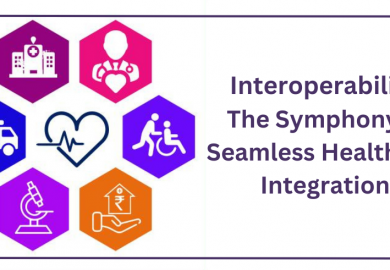Digital engagement the way forward for bridging revenue gap of Healthcare providers

The Covid-19 pandemic has affected the healthcare sector in more ways than it looks. The safety protocols implemented to mitigate the spread of the virus led to lost income due to delayed care of many patients. These costs now threaten the bottom lines of healthcare providers. According to American Health Association, healthcare providers could lose $53 billion in revenue in 2021. A slow recovery could increase this number to closer to $122 billion, leading to losses of 4%-10% of total hospital revenue. But pandemic is not the only contributor to the losses. To look at some of the other causes of the revenue crisis that has grasped the U.S. Healthcare industry, one major contributor is the decline in hospital admissions. According to Peterson Center and Kaiser Family Foundation’s Health System tracker, overall health spending has dropped for the first time in recorded history. Adding to the woes are the increasing labor and supply costs, leading to the rising cost of healthcare. In addition to patients putting off needed healthcare services due to the pandemic, there has been an accelerated shift in payment responsibility toward patient self-pay. Patient financial responsibility for healthcare costs accounted for 5% of provider revenue in 2000. Today, that number is 35%, making patients the third-largest payer, behind Medicare and Medicaid.
Now, since the procedure volumes are decreasing and care providers’ expenses are increasing, the providers need to mitigate the damage to their revenues and help the patients get the care they need. One of the key strategies for the providers would be to analyze their payer mix and develop successful care experiences for the patients. Also, the shift to self-pay needs to be addressed by the providers by accelerating collection for services that have already been delivered.
Now that we are talking about digital, a key question that healthcare providers have is how their patients will react to digital engagement. Studies suggest that patients prefer digital not just for communications but also for paying their medical bills or online patient portals. As per a survey conducted by Accenture, 90% of the patients who used any type of digital health tool in 2020 rated their experience as good. In fact, patients are more comfortable paying for their services digitally from a trusted vendor. According to a U.S. bank survey, only 64% of the patients paid their medical bills at doctor’s office in 2020, with 74% of them wanting the ability to pay these bills online. While younger patients often demand modern digital interactions with patients but it has been seen that patients with ages 70-79 respond to digital interfaces at the same rate as that for patients 20-49 with baby boomers i.e. 57-75 years of age having worked with technology throughout their careers face no difficulty in digital interactions.
Digital engagement or digital patient experience reaches your patients on the channels they frequently use for their communications in a convenient and easy-to-use way that patients across age groups prefer. It allows for consistent and robust branding by delivering smooth and uninterrupted patient care by providing interactive engagement and building trust. High quality and frictionless engagements lead to improved patient care and accelerate payments and collection, whereas nonintuitive processes can lead to delayed payments and cause providers to lose business. Now, we have listed down some of the key elements for high-quality digital experiences.
The first element for providers is to securely manage patient data across all patient touchpoints and create a single source of truth by integrating multiple channels into one. To provide the best patient experience, the patient communications need to provide rich information accessible throughout all assistive devices. Personalized billing systems which are integrated with marketing and branding platforms will allow for a frictionless experience. A secure and centralized archive for document lifecycle should allow for digital statement sharing and ePresentment; and allow patients to be notified via secure email or text message for sharing documents or reminders.
The second key element is having access to the patient portal, which should provide on-demand access to new and historical information. Giving patients the ability to manage account information, determine engagement, change delivery preferences, and address problems or inquiries via in-portal messaging with customer care leads to highly personalized experiences that are proven to generate interest and motivate action.

Lastly, the system should be flexible and should be able to deliver interactive engagements to patients via the channels with which the patients are comfortable. An example would be delivering patient statements securely to patient’s email inbox for an interactive experience. The system should try to engage patients via two-way communication instantly and should be able to deliver alerts or account-level information securely.
So to sum it up, while healthcare organizations are today trying to balance a wide range of priorities, improving patient engagement is one way for healthcare providers to ensure profitability and shore up their revenues. Better engaged patients will not only have greater trust and loyalty for the providers but also enhance collections.
At Elixir, we understand healthcare organizations’ needs, which is why we have developed for you a one-stop solution for all your patient engagement needs. With out-of-the-box salesforce capabilities, Elixir can be seamlessly integrated into all your patient engagement platforms with capabilities to manage your alumni as well.
Elixir Practice Management Suite is a comprehensive solution consisting of four modules that fit rightly into your healthcare business irrespective of your facility size and type. The Elixir Contact Center module helps in managing the entire facility census and the patient intake process. At the same time, the Elixir EHR solution aims at delivering an end-to-end seamless patient care experience. The third module is Elixir Billing, and it effectively fetches data from any EHR platform to process medical claims and manages the entire revenue cycle. Elixir Patient Portal is the last module, and it provides an integrated experience for the patients.
Do fill out this contact form if you feel that Elixir will be an asset to streamline your patient engagement process.
Recent Posts
360-Degree Patient Care: A Comprehensive Approach to Healthcare
Interoperability: The Symphony of Seamless Healthcare Integration
Categories
Recent Comments
Archives
- February 2025
- November 2024
- July 2024
- April 2024
- February 2024
- November 2023
- September 2023
- August 2023
- February 2023
- January 2023
- July 2022
- April 2022
- March 2022
- February 2022
- January 2022
- December 2021
- November 2021
- October 2021
- September 2021
- March 2021
- December 2020
- November 2020
- October 2020
- May 2020


